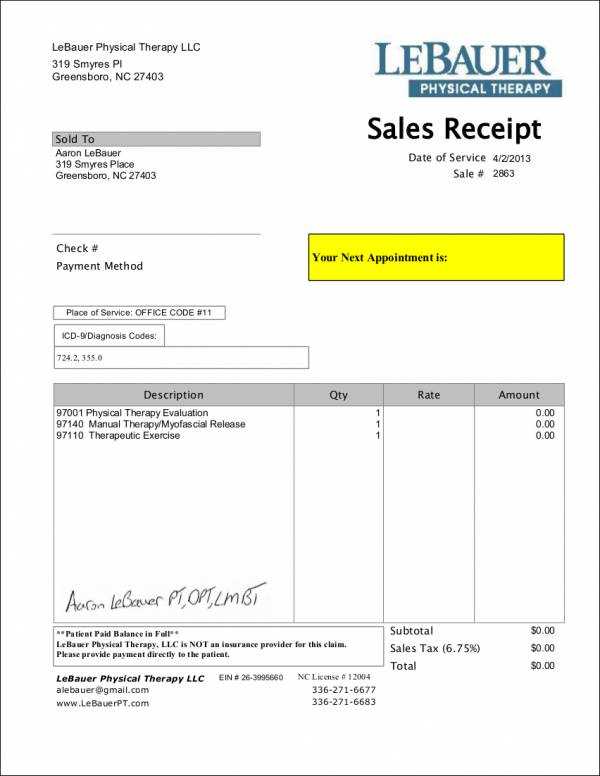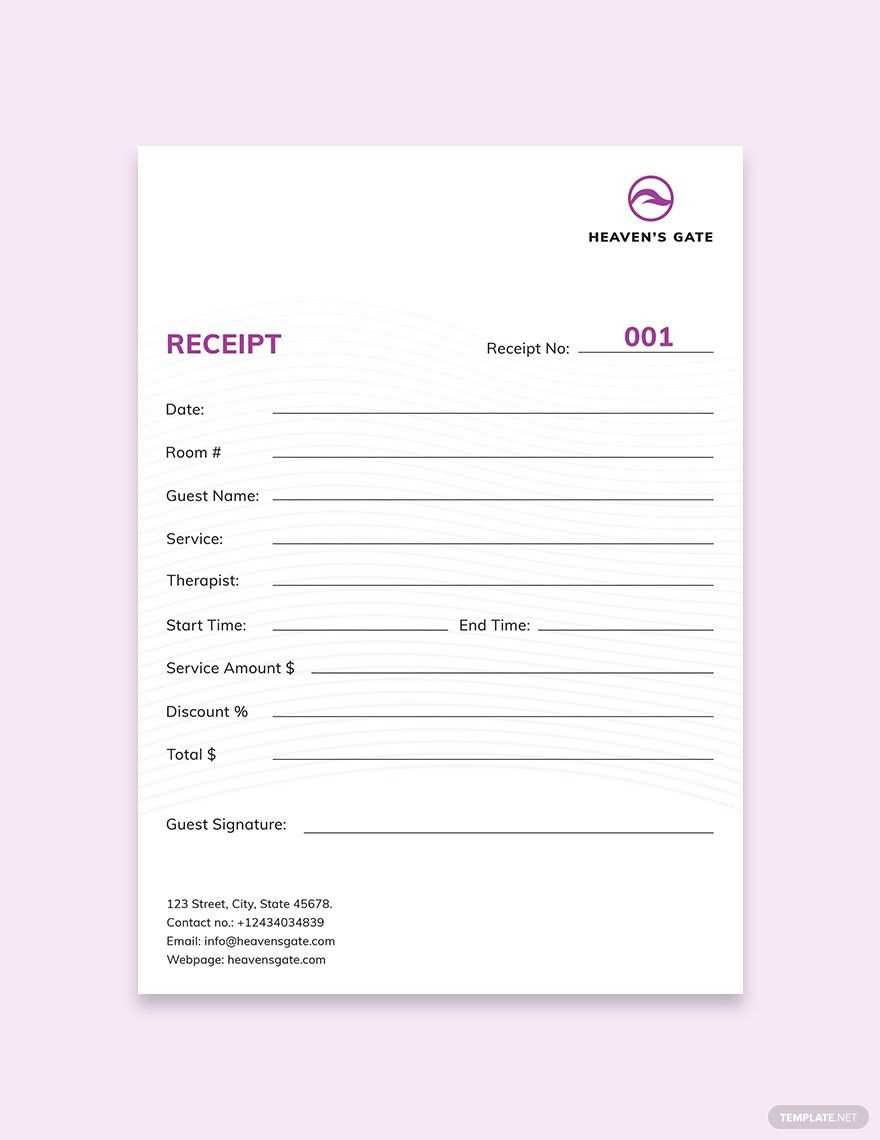
For creating a massage therapy receipt, include the client’s name, therapist’s name, date of service, and a detailed breakdown of the services rendered. Each service should be clearly listed with its price, duration, and description, so the client can easily understand what was provided.
Use precise language to describe each service offered. For example, specify the type of massage (e.g., Swedish, deep tissue) and any additional treatments (e.g., aromatherapy, hot stone therapy). Including the time spent on each service will help clients see exactly what they paid for.
Ensure that taxes and any discounts are clearly displayed, showing the final amount due. If applicable, include your business’s contact information and license number for transparency. This not only builds trust but also keeps the documentation compliant with local regulations.
Keep the receipt simple yet informative to avoid confusion. Providing clear, itemized details encourages repeat business and helps clients keep track of their visits for future reference.
Receipt Massage Therapy Template
Include the client’s full name, address, and contact details at the top of the receipt. Clearly state the date of the session, the time spent, and the type of massage provided. Use specific terms such as “Swedish massage,” “deep tissue,” or “sports therapy” to describe the service.
Itemize the services rendered, breaking down the price per service, and list any additional products used, like oils or creams. Make sure the total cost is clearly displayed at the bottom of the receipt, along with applicable taxes if necessary. Include a payment method section, noting whether the client paid by cash, card, or another method.
If applicable, provide a space for tips or gratuities. Ensure there is a space for your business name and contact details at the footer, so the client can reach out with any questions or future appointments. End with a thank you message to show appreciation for the client’s visit.
How to Structure a Clear Massage Therapy Receipt
Begin by listing the therapist’s name and business details. Include the full name, address, phone number, and email address, as well as the business license number if applicable. This ensures transparency and gives the client the necessary information for future contact.
Next, include the client’s full name and the date of the massage session. This helps keep records organized and can be useful for reference in case of follow-up inquiries.
Clearly outline the type of service provided, such as “Swedish Massage” or “Deep Tissue Therapy.” Avoid vague terms and be specific about the treatment to avoid confusion later. Indicate the session’s duration and cost per hour or service rate to maintain clear pricing expectations.
Include payment details: specify the total amount charged, method of payment (e.g., credit card, cash), and any taxes or discounts applied. If the session was part of a package, mention how many sessions were included and the remaining balance if applicable.
If applicable, add any additional information such as tips, pre-paid sessions, or cancellations. This can help the client track payments and any remaining balance or credits. Make sure the receipt is easy to read and organized for straightforward understanding.
Finally, sign and date the receipt. This adds authenticity and confirms that the transaction was completed. Provide a copy of the receipt to the client for their records.
Best Practices for Customizing Your Template for Different Clients
Tailor your template to match each client’s specific needs by adjusting key details such as font style, color schemes, and layout. Personalization enhances the client experience and builds trust, so consider their preferences, branding, and the type of message they want to convey.
For clients in health and wellness, incorporate soothing colors and simple, clean fonts. A minimalistic layout ensures the message is clear and easy to read. On the other hand, clients in more dynamic fields may prefer bold colors and a more energetic design.
Ensure you capture the client’s tone by using personalized text that speaks to their target audience. Modify sections like the introduction and services description to align with their brand voice. If they offer specific treatments, incorporate relevant terms and treatment names to make the template feel more authentic.
Customize the call-to-action (CTA) buttons based on client goals. For instance, if the client is focused on building long-term relationships, use a CTA like “Schedule Your Next Appointment” instead of a generic “Book Now” option.
Lastly, consider adding personalized testimonials, reviews, or certifications to give clients confidence. Adding a touch of social proof increases credibility and shows that you understand their business needs.
Compliance Considerations When Creating a Massage Therapy Receipt

Ensure your receipt includes the full name of the massage therapist, as required by local regulations. This helps clients verify the service provider and can also be useful for insurance or health savings claims.
Client Information

Provide the client’s name on the receipt. While this may not be mandatory in all areas, it offers additional clarity and helps avoid confusion in case of disputes or refunds.
Service Details
- Clearly state the type of therapy provided, such as deep tissue, Swedish, or sports massage. This transparency ensures the receipt meets legal standards and helps clients track their health services.
- Include the duration of the session. Most jurisdictions require this information for reimbursement purposes and clarity.
Payment Information

- List the amount paid along with any applicable taxes. This prevents misunderstandings and supports transparency in business transactions.
- If payment is made through insurance or a health savings account, include relevant billing codes or any necessary details as per your region’s insurance requirements.
Include the therapist’s business contact details. This not only provides clients with a way to follow up but also ensures compliance with specific business licensing laws in some regions.
Finally, retain copies of all receipts for the required duration. Regulations vary, but keeping records ensures you comply with tax and business regulations.


